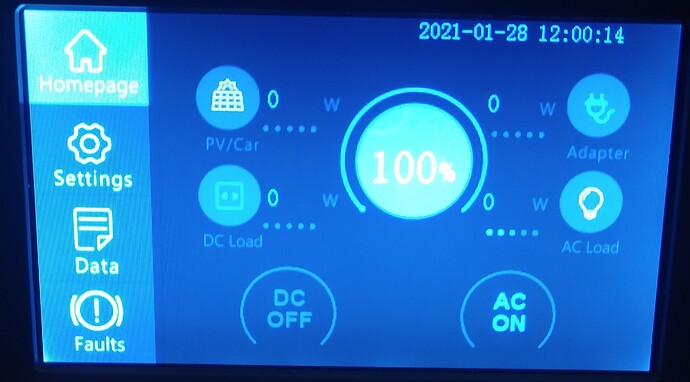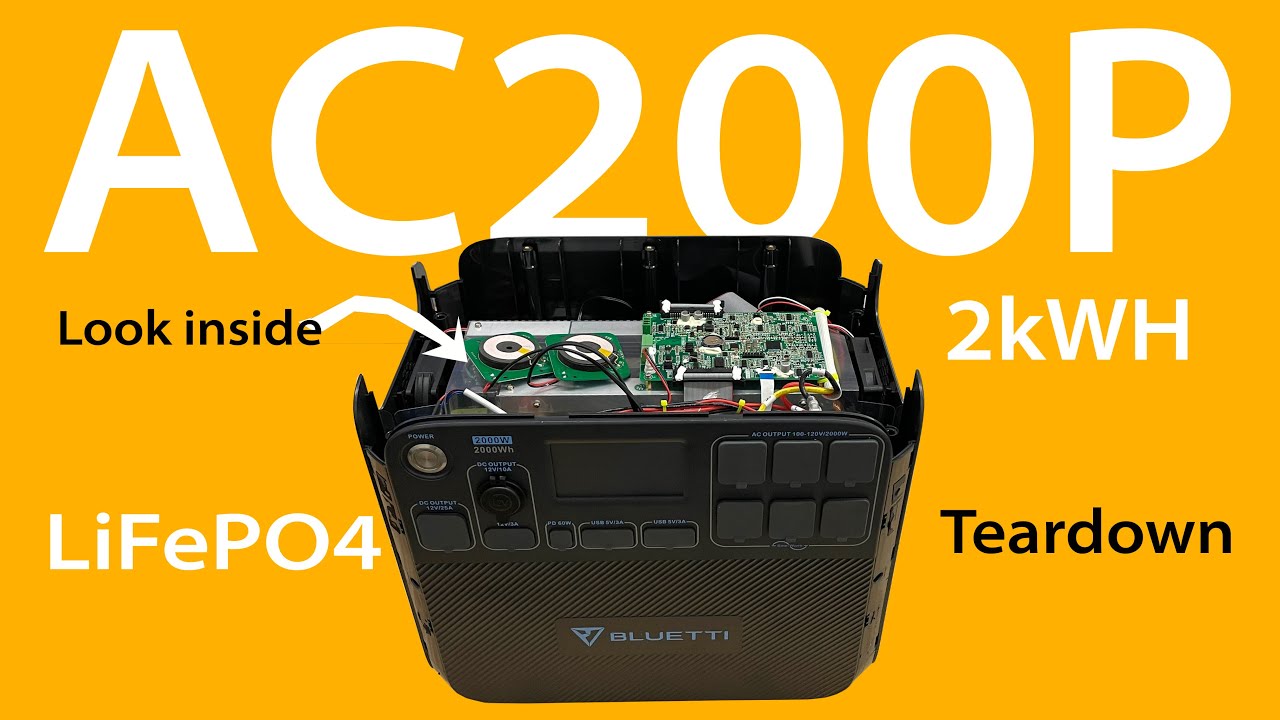Yes, my brain not thinking clearly…too many issues but it is what it is. If I’m not using the AC200P it is off and doesn’t lose anything. However if had unreliable grid power it is apparent one might lose SOC over time (5 days) vs 8 days (AC200) and its just fear of the unknown and wanting more. It is a good device and glad I have it.
Was this test on ac200 or ac200p? How does one compare to the other?
If it’s just on and you’re not using it at all (both AC and DC are off, and there’s no input…Standby only), it’s going to auto shutdown after 24 hours anyway. I “forced” the unit to continue running by being there to immediately turn it back on after each 24 hour auto shutdown. So 5 days, 8 days, 190 hours etc is immaterial in the real world. The days/hours mentioned are just data points to possibly calculate other values, and compare non-P with P models. In the course of the test, it was also revealed how the % SOC displayed as it slowly drained, is not really a true representation of actual SOC. The only numbers you can really rely on are the top and bottom ones…100% and 0%. Not so much the numbers in between.
If you’re referring to my test, as I stated at the very begining of it, “AC200 (non-P).”
It seems that people are complaining more about this overhead for ac200p. Some reported seeing a drop of 57% charge in 24 hours with both ac and dc on and no load. Is this normal?
What’s the working temperature of your unit? Due to the chemical properties of LiFePO4, AC200P‘s discharge may be faster at low temperatures.
Mine lost 8~12% charge overnight, at 25℃/77℉
Was that with dc or ac on? I do not own an ac200p yet but is thinking to get one for my RV. I own one ac200. One of my applications is to leave ac on and use ac200p for shore power. Dropping 50% with ac on and no load in 24 hours would concern me.
Power on, AC/DC off.
I’ll turn on AC/DC tonight and see the difference.
Latest 24 hour overhead data point: AC200 (non-P), 100% SOC, DC off, AC on, no load. No input. 70°F ambient temp.
Result, 24 hours AC only on: 25% overhead. Kind of a nice round number. ![]()
Start of 24 hour test.
End of 24 hour test.
That was my finding too. It seems much better than ac200p. What do you think?
I haven’t seen an identical test on a AC200P using the same parameters yet, so I can’t say.
I am really sorry that I mistakenly thought you were Mark Yue from Bluetti. My bad. Thanks for publishing such a thorough test. I own an ac200 so this test is very relevant to me.
![]() No problem Roger.
No problem Roger.
Also, I just finished my first usable capacity test on the AC200 (non-P). From 100%, DC off, no input. 70°F ambient temperature. Draw was about 300w.
Result: 1,410wh usable.
Final number at shutdown from 100%.
Draw during test.
That was less than 80% usable even though Bluetti claims ac200 capacity is actually more than 1700wh.
I feel certain the battery is at least 1700wh. It’s just that the overhead on that powerful 2000w inverter as well as all the other electronics and cooling system takes a chunk of it, as expected. That plus the AC200 holds on to a reserve of an additional 10% in order to help keep the unit from draining down to “true” zero by accident (inactive long-term parasitic), which could permanently damage or kill the battery. I do wish that companies could advertise usable wh’s, but there are just too many variables such as load, ambient temperature, etc.
You are right. I thought about those factors too later. 80% efficiency is a respectable number.
Just saw the following video.
Ac200p has 1800wh usable capacity. That is 400wh more than ac200. If you are one of the ac200 backers, you can get one ac200p with the same price you paid for your ac200. If you need an extra one, that sounds a good deal to me.
- List item
Hey Roger.
Where do I go to purchase the ac200p for the same price of the AC200 I purchased during the Indie backer program?
BTW, that new 500 is really something. Thanks for posting that vid.
Thanks again,
D
Message Mark Yue from Bluetti.
There are some requirements and there is an expiration date. I do not know if it is expired already.




